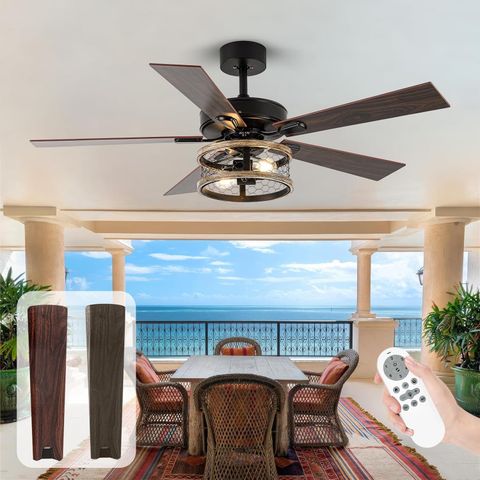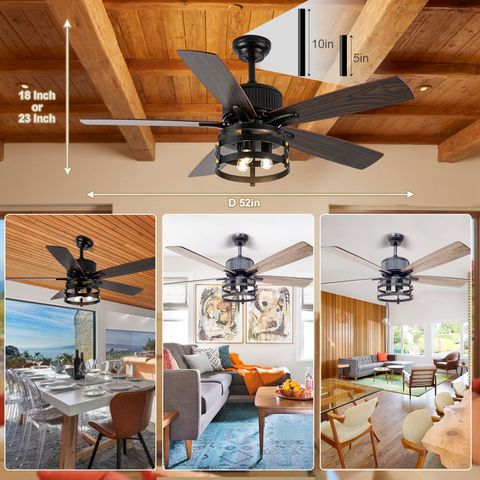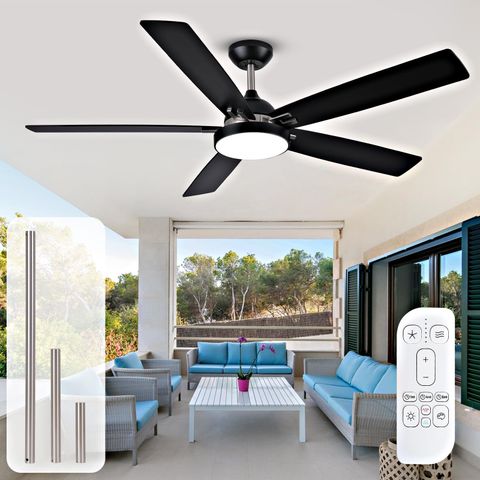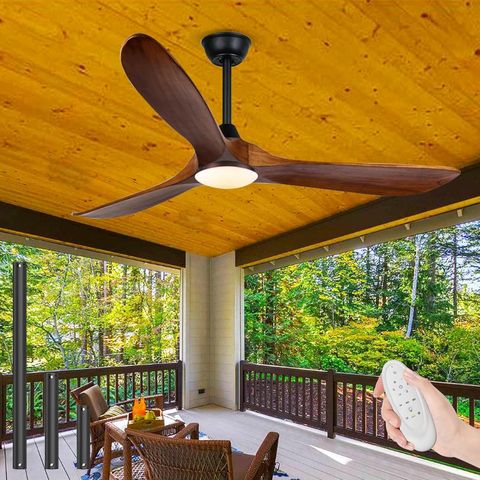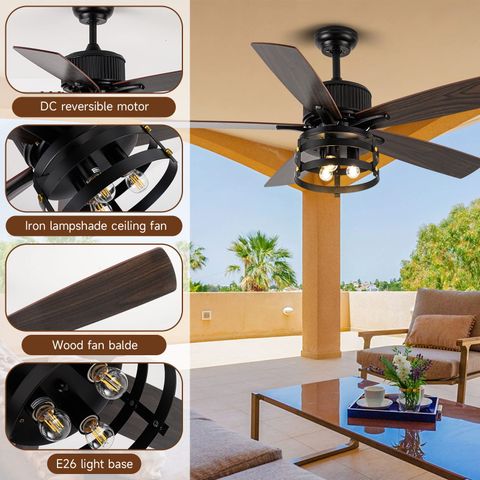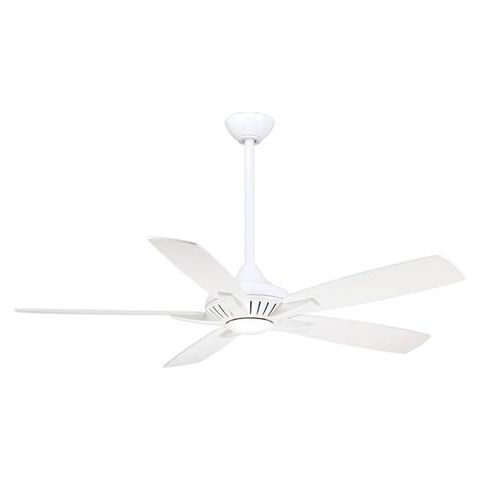Picture this: You’re relaxing on your patio, feeling the warmth of summer sun on your skin, when suddenly a gentle breeze sweeps across your face. Or perhaps it’s winter, and you’re grateful for that same breeze to keep things from getting too stuffy. This isn’t just wishful thinking – it’s what a properly chosen outdoor ceiling fan with reversible airflow can deliver.
Outdoor living spaces have become increasingly popular, transforming backyards into extensions of our homes. But the joy of spending time outside can quickly turn into discomfort if you don’t have proper ventilation. Enter the outdoor ceiling fan with reversible airflow – a game-changer for those who want to enjoy their outdoor spaces year-round. These fans offer the versatility to provide cooling breezes in summer and gentle circulation in winter, making them essential additions to any covered outdoor area.
Understanding Reversible Airflow Technology
Reversible airflow fans work by changing the direction of blade rotation to match seasonal needs. In summer, the blades spin counterclockwise to push air downward, creating a cooling effect. During winter, they rotate clockwise at a slower speed to pull cool air up and circulate warm air that naturally rises to the ceiling. This simple mechanical change makes a huge difference in how effectively your fan works.
The technology behind these fans involves a simple switch or remote control that changes the motor’s rotation direction. It’s not rocket science, but it’s clever engineering that maximizes efficiency. Many modern models even feature automatic sensors that detect temperature changes and adjust airflow direction accordingly.
Think about it like having two different tools in one box. One tool works great for moving air down in hot weather, while another excels at redistributing warm air in cold weather. The key is understanding when each mode is most beneficial.
Essential Features to Look For
When shopping for an outdoor fan with reversible airflow, several features stand out as must-haves:
• Weatherproof rating: Look for IP44 or higher ratings, which protect against water and dust
• Motor quality: A high-quality motor ensures longevity and quiet operation
• Blade material: Aluminum blades are often preferred over plastic for durability
• Remote control capability: Makes adjusting settings easy without climbing ladders
• Light fixture integration: Some fans come with built-in lighting options
• Energy efficiency: Look for ENERGY STAR certified models
Consider how much maintenance you’re willing to do. Some fans require annual cleaning, while others are virtually maintenance-free. The investment in quality upfront can save you headaches later.
For example, a fan rated IP65 will handle heavy rain better than one rated IP44, but it might cost more. Weigh your local climate against your budget to find the sweet spot.
Size and Mounting Considerations
The size of your outdoor space directly impacts which fan you should choose. A small deck might only need a 36-inch fan, while a large patio could benefit from a 52-inch model. But it’s not just about blade span – you also need to consider ceiling height and mounting requirements.
Most outdoor fans work best when mounted 8-12 feet above the ground. If your ceiling is lower, look for flush mount or low-profile options. The mounting hardware is crucial – make sure it’s designed specifically for outdoor use and can support the fan’s weight.
Take measurements before you buy. Measure the room width and length, then calculate the square footage. A general rule of thumb is one fan per 75-100 square feet for optimal performance. For instance, a 150-square-foot covered porch might need a 42-inch fan, while a 200-square-foot area could comfortably accommodate a 52-inch model.
Don’t forget about clearance. You need at least 7 feet of clearance between the fan blades and any overhead obstructions. This isn’t just about safety – it’s about ensuring the fan operates efficiently.
Material and Durability Factors
Outdoor fans face harsher conditions than indoor models. Salt spray, UV rays, humidity, and temperature fluctuations all take their toll. That’s why material choice matters significantly.
Aluminum blades are often the preferred choice because they resist corrosion better than plastic alternatives. They’re also lighter, which reduces stress on the motor and mounting system. Some manufacturers offer powder-coated finishes that provide additional protection against rust and fading.
The motor housing should be made from materials that can withstand moisture and temperature changes. Stainless steel components are ideal for coastal areas where salt exposure is high. For inland locations, regular aluminum or plastic housing with proper sealing can be sufficient.
Consider the warranty terms. A good manufacturer will offer 5-10 year warranties on motors and 1-3 years on finish and hardware. Check if they cover parts replacement and labor costs. Some companies even offer extended warranties for outdoor use.
One real-world example: A fan installed in a beachfront home with salt spray needs different materials than one in a mountain cabin. The coastal version might need marine-grade stainless steel components, while the mountain version could get away with standard outdoor-rated materials.
Energy Efficiency and Operating Costs
Energy efficiency is becoming more important as utility costs rise and environmental awareness grows. Look for fans with ENERGY STAR certification, which indicates they meet strict energy efficiency guidelines set by the U.S. Environmental Protection Agency.
Modern reversible fans typically consume between 50-100 watts for their motor, depending on size and speed settings. A typical 52-inch fan running continuously might cost about $10-15 per month in electricity. Compare this to a central air conditioning system, which can cost $100-200 monthly.
The key advantage of reversible fans is that they don’t require electricity to operate in reverse during winter months. The fan still provides air circulation without using power, though you’ll need to manually switch directions.
Many fans now feature smart controls that can be programmed to turn on automatically based on temperature or occupancy. This can lead to significant savings over time. Some models even integrate with smart home systems, allowing you to control them remotely via smartphone apps.
For a family of four living in a moderate climate, switching to a reversible outdoor fan could save $50-100 annually compared to running air conditioning exclusively.
Installation and Maintenance Tips
Proper installation is critical for both safety and performance. While some fans are designed for DIY installation, others require professional help, especially for complex mounting situations or electrical work.
Before installing, check that your electrical supply can handle the fan’s requirements. Most outdoor fans need dedicated 15-20 amp circuits. If you’re unsure, consult an electrician. The wiring should be protected from weather elements, so ensure all connections are properly sealed.
Maintenance is straightforward but important. Clean blades every few months with mild soap and water. Remove any debris that accumulates, especially after storms. Lubricate moving parts according to manufacturer instructions, usually every six months.
Check the mounting hardware annually for signs of loosening or corrosion. Tighten bolts as needed, but don’t overtighten, which can damage the mounting system. Some fans come with maintenance schedules that specify exactly what to do and when.
Real-world experience shows that fans installed by professionals tend to last longer and perform better than DIY installations. However, many reputable brands offer detailed installation guides and customer support to help homeowners complete the job themselves.
Choosing the right outdoor ceiling fan with reversible airflow isn’t just about picking something that looks good – it’s about finding a solution that works with your lifestyle and environment. Whether you’re looking to extend your outdoor living season or simply improve air circulation, these fans offer real value.
Remember, the best fan for you depends on factors like your space dimensions, local climate, budget, and desired features. Take time to research different models, read reviews, and consider your specific needs. Don’t overlook the importance of proper installation and regular maintenance – these factors determine whether your investment will pay off for years to come.
A well-chosen outdoor fan with reversible airflow can transform your backyard from a place that’s uncomfortable in extreme weather to a comfortable extension of your home. It’s an investment that pays dividends in comfort, energy savings, and enjoyment of your outdoor space throughout the year. The key is matching the right fan to your specific situation, considering everything from blade size to weather resistance. With thoughtful selection, you’ll find that your outdoor space becomes a true sanctuary.
